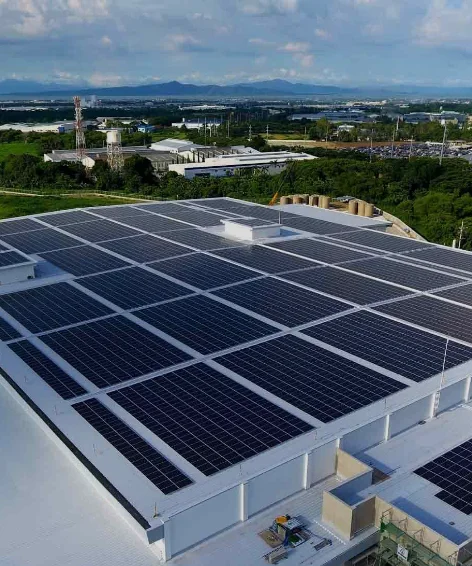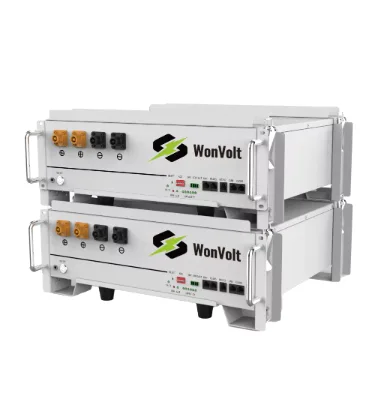Os cabos de série aumentam a tensão enquanto mantêm a corrente constante, reduzindo perdas de transmissão e otimizando a eficiência para grandes sistemas sem escoamento. O cabo paralelo mantém a tensão mas aumenta a corrente, oferecendo melhor desempenho em condições parcialmente sombreadas apesar de exigir cabos mais espessos. A configuração óptima depende da compatibilidade invertida, fatores ambientais como sombra e temperatura, e necessidades específicas de aplicação – sistemas residenciais muitas vezes priorizam estética e segurança com configurações paralelas ou de séries de baixa tensão, enquanto instalações comerciais alavancam cordas de séries de alta tensão para eficiência de custo e escalabilidade.
Introdução WonVolt: Engenhado para Performance and Reliability
Quando se trata de painel solar e soluções de bateria, você precisa de um parceiro que fornece tanto escala quanto precisão. WonVolt tem uma capacidade de 1,2GW para painel solar e 2,5GWh para bateria de lítio, e fornece uma solução de energia limpa de um ponto. Desde módulos avançados de tipo N de TOPCON para BESS contentore de grande escala, sua oferta abrange todas as principais aplicações em aplicação de energia limpa. Seu portfólio inclui painel solar (PERC, N tipo TOPCON e HJT), BESS (Sistema de armazenamento de energia de bateria), bateria de lítio de refrigeração líquida, bateria de lítio de refrigeração de ar inteligente para I& projetos C, e outros tamanhos diferentes de baterias para uso residencial. Você encontrará seus sistemas funcionando de forma confiável em mais de 90 países.
Se você estão planejando uma instalação comercial ou industrial ou expandindo a cobertura solar residencial, explorando Bateria de lítio de 5kWh de baixa tensão WV51100L ou o limpo 450W Full Black Solar Panel WV-54JWU450-H8NSSe otimizar para eficiência ou estética, este é um fabricante que fornece em ambas as frentes.
Diferenças chave entre série e fio paralelo
Escolhar entre série e paralelo impacto de tensão do sistema, comportamento corrente e desempenho geral. Para tomar a decisão certa para sua estratégia de configuração, você deve avaliar como cada método se alinha com os requisitos elétricos do seu sistema.
Voltação e comportamento atual em cada configuração
Na série de cabos, as tensões de cada painel se juntam enquanto a corrente permanece constante. Por exemplo, se você ligar quatro painéis classificados em 40V e 10A em série, o array produz 160V em 10A. Em contraste, o cabo paralelo mantém a tensão constante mas acrescenta corrente - quatro desses mesmos painéis cabeados em paralelo entregam 40V a 40A.
Essa distinção torna-se crucial ao medir a sua entrada invertida. A maior tensão das conexões de série reduz o fluxo corrente através dos cabos, o que minimiza perdas resistentes - essencial em sistemas maiores onde os cabos são longos.
Impacto na eficiência do sistema e perdas
As configurações de séries geralmente produzem maior eficiência do sistema devido a menores perdas de I ²R (corrente quadrado vezes resistência) nos cabos. No entanto, elas são mais sensíveis à sombra: se um painel não funciona bem devido à terra ou obstrução, pode reduzir a saída de toda a corda.
O cabo paralelo mitiga essa questão, uma vez que cada painel funciona independentemente. Isso torna favorável onde a sombra parcial é inevitável – como telhados com chimeneas ou árvores próximas – embora necessite de cabos mais espessas devido a amperagem maior.
Coincidir a Configuração com os Requisitos do Sistema
O design elétrico de seu sistema deve se alinhar com especificações inversores e produção de energia desejada. A escolha entre séries e paralelos não é apenas t écnica, influencia na eficiência de custos e fiabilidade a longo prazo.
Compatibilidade Inverter e Windows Voltage
Os inversores têm intervalos de tensão mínimos e máximos de MPPT (Maximum Power Point Tracking) que devem ser cumpridos pelo array solar. O cabo em série é frequentemente necessário para alcançar esses limiares eficientemente sem contagem excessiva de painéis.
Por exemplo, se seu inversor requer uma entrada mínima de MPPT de 150V e seus painéis fornecem 40V cada um em Vmp (tensão com potencia máxima), você precisará de pelo menos quatro painéis em série por cadeia. Excedendo a tensão máxima de entrada (geralmente cerca de 600-1000 V) pode danificar o inversor ou garantias vazias.
Considerações de Design do Banco de Bateria
O design do banco de bateria também influencia as decisões de cabo. Ao projetar com sistemas modulares como o sistema WonVolt RACK HV PRO, que suporta até 777V Capacidade até 82kWh por agrupamento, configurações de cadeias de alta tensão maximizam a compatibilidade ao mesmo tempo que reduzem perdas de conversão.
Baterias de baixa tensão como WV51100L são melhor adequados para instalações residenciais menores onde as margens de segurança são mais estritas mas é necessária flexibilidade em vários perfis de carga.
Efeitos dos Fatores Ambientais na Saída
As condições ambientais afetam significativamente o quão bem o método de cabo funciona em ambientes do mundo real – especialmente quando consideramos coeficientes de temperatura ou exposição desigual à luz solar em painéis.
Escenários de Sombra e Obstrução Partial
A sombra parcial impacta séries de cordas mais severas do que arrays paralelos porque a corrente através de uma corda de séries é limitada pelo seu ligamento mais fraco. Em ambientes sombreados como telhados urbanos ou instalações perto de estruturas altas, usando diodos de bypass ou microinversores pode mitigar esse efeito, mas aumentar o custo.
O cabo paralelo permite que módulos sombreados continuem contribuindo com algum poder sem arrastar outros - tornando-o preferível quando obstruções não podem ser evitadas totalmente.
Coeficientes de temperatura e comprimentos de cabo
A temperatura afeta tanto a saída de tensão quanto a resistência no cabo. - painéis como o painel solar negro completo WV-54JWU450-H8NS 450W possuem um coeficiente de temperatura de Pmax de -0,290%/°C; Assim, em dias quentes, sua tensão de saída cai ligeiramente, o que precisa de ser considerado ao projetar cordas próximas aos limites inferiores invertidos.
O comprimento do cabo importa mais em configurações paralelas devido a maior amperagem; As corridas mais longas requerem condutores mais espessos para evitar perdas de tensão. A configuração de séries beneficia de tamanhos reduzidos de cabos graças a baixo fluxo corrente por cadeia.
Aplicações práticas para cada método de fio
Vamos traduzir a teoria na prática olhando para cenários típicos de implantação onde uma configuração supera a outra baseada em restrições espaciais ou demandas de carga.
Colas de teta residenciais com espaço limitado
Em telhados pequenos com espaço limitado mas exposição coerente à luz solar, cabos de série maximizam a tensão dentro de menos módulos. O módulo WV-54JWU450-H8NS é ideal aqui devido a suas dimensões compactas (1722x1134mm) combinadas com alta eficiência (23%). Sua estética inteiramente negra também se mistura de forma uniforme em arquitetura modern a - uma preocupação fundamental para muitos donos de casa priorizando a integração visual ao lado do desempenho.
Quando a sombra é intermitente durante partes do dia (por exemplo, de árvores próximas), optar por menos cordas paralelas pode ajudar a manter uma colheita de energia consistent e apesar de obstruções parciais.
Instalações comerciais com alta demanda
Em instalações comerciais onde o tamanho do sistema excede várias centenas de kilowatts - como o projeto da África do Sul usando 605W * 2810 PCS totalizando 1,7MW - híbridos paralelos de série são mais comuns. - Longas cordas reduzem os custos de cabo enquanto ramos paralelos equilibram a carga em múltiplos canais MPPT dentro de grandes inversores de três fases.
Módulos bifaciais de alta eficiência, como o painel solar bifacial 600W WV-72KUN605-H8NS, funcionam excecionalmente bem aqui graças aos ganhos de irradiação do lado traseiro que aumentam o rendimento global mesmo em condições nuvens ou superfícies reflexivas como telhados de concreto.
Escolhar painéis Optimizados para sua Estratégia de Configuração
Sua estratégia de cabo deve informar sua seleção de módulos - não apenas baseada em potência, mas também em estabilidade térmica, impressão física, estética e taxas de degradação ao longo do tempo.
Benefícios dos módulos de alta eficiência em cadeias de série
Módulos de alta eficiência reduzem o número total de painéis necessário por cadeia, ao mesmo tempo que atingem voltagens alvo mais rápido. Isso traduz-se em hardware menos rápido por watt instalado - reduzindo significativamente os custos de BOS (Balance of System) em instalações em grande escala onde a pilha de margens importa mais.
Módulos como WV-54JWU450-H8NS oferecem vantagens de geração de luz baixa que prolongam as horas de produção para períodos de manhã cedo ou tarde da tarde, quando a irradiação cai abaixo dos níveis máximos - perfeito para telhados oriental-oeste ou regiões com cobertura de nuvem frequente.
Considerações estéticas e de desempenho para sistemas residenciais
Clientes residentes muitas vezes priorizam a aparência ao lado das métricas de desempenho. Os módulos completos negros oferecem uniformidade que se integra belamente em telhados escuros sem comprometer a densidade de energia. Além disso, degradação inferior: 0,4% degradação anual durante o ano 2 – 25 assegura rendimentos estáveis a longo prazo de investimento mesmo após décadas de operação.
FAQ
Q1: Posso misturar diferentes painéis de wattage em uma cadeia?
A: É tecnicamente possível mas não recomendado porque características elétricas diferentes causarão perdas de incumprimento; sempre usam modelos idênticos dentro de uma única cadeia para eficiência óptima.
Q2: Qual configuração é mais segura – série ou paralela?
A: Ambos podem ser seguros quando adequadamente projetados; no entanto, sistemas paralelos operam em tensões mais baixas que podem ser preferíveis em ambientes residenciais onde os projetos de segurança do toque são priorizados.
Q3: Como decido quantos painéis por corda?
A: Calcula com base no Vmp de seu painel multiplicado por número de painéis; assegurar permanências totales dentro do seu inverter s janela MPPT através de intervalos de temperatura esperados incluindo dias mais frios quando a tensão aumenta ligeiramente devido aos efeitos térmicos.



